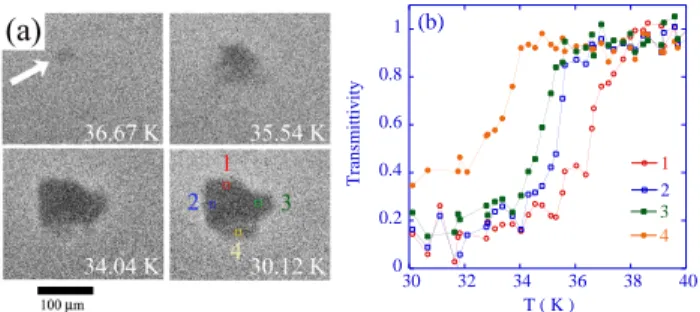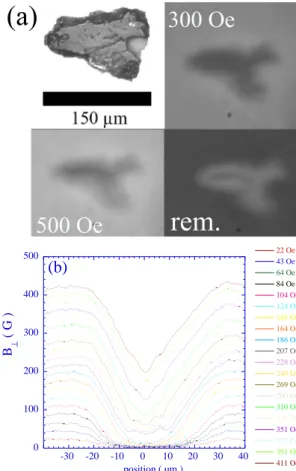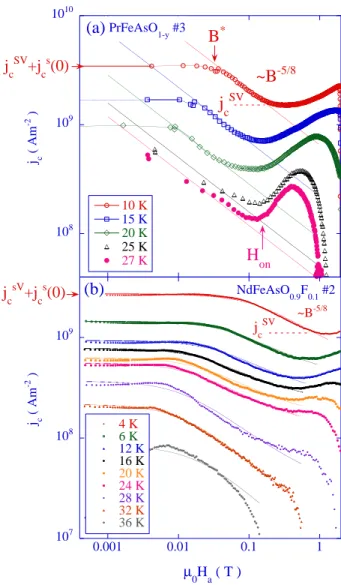Flux pinning in PrFeAsO0.9 and NdFeAsO0.9F0.1 superconducting crystals
Texte intégral
Figure




Documents relatifs
Owing to both the extreme thermodynamic characteristics in which their growth takes place and a complex crystallographic polymorphism upon cooling, cubic rare-earth
Abstract.- Pinning in a type II superconductor with periodically distributed inhomogeneities is "lo- cal" only below the "inversion temperature" T. For T>T , due
Abstract.- Resistivity measurements in CeB6 show-a pronounced anomaly of the Fisher-Langer type at 2.5 K Magnetic susceptibility and magnetization reveal a strong magnetic
to the SQUID) was at fixed temperature, whilst the other could be heated; temperature gradients were restricted to the small region between the thermal anchors. A flux
4 : Volume pinning forces along the flux densi- ty profiles of the undeformed niobium specimen (dia- meter 4 mm) orientated parallel to the primary slip plane. CONCLUSION.-
These results suggest that the structural transformation begins at a pretty higher temperature, accompanies enhanced thermal expansion and attains to T with the largest a.. It
L’archive ouverte pluridisciplinaire HAL, est destinée au dépôt et à la diffusion de documents scientifiques de niveau recherche, publiés ou non, émanant des
Navau, “Imprinting skyrmions in thin films by ferromagnetic and superconducting templates,” Applied Physics Letters, vol. Kubo, “Superconducting properties of amorphous MoX (X=Si,



